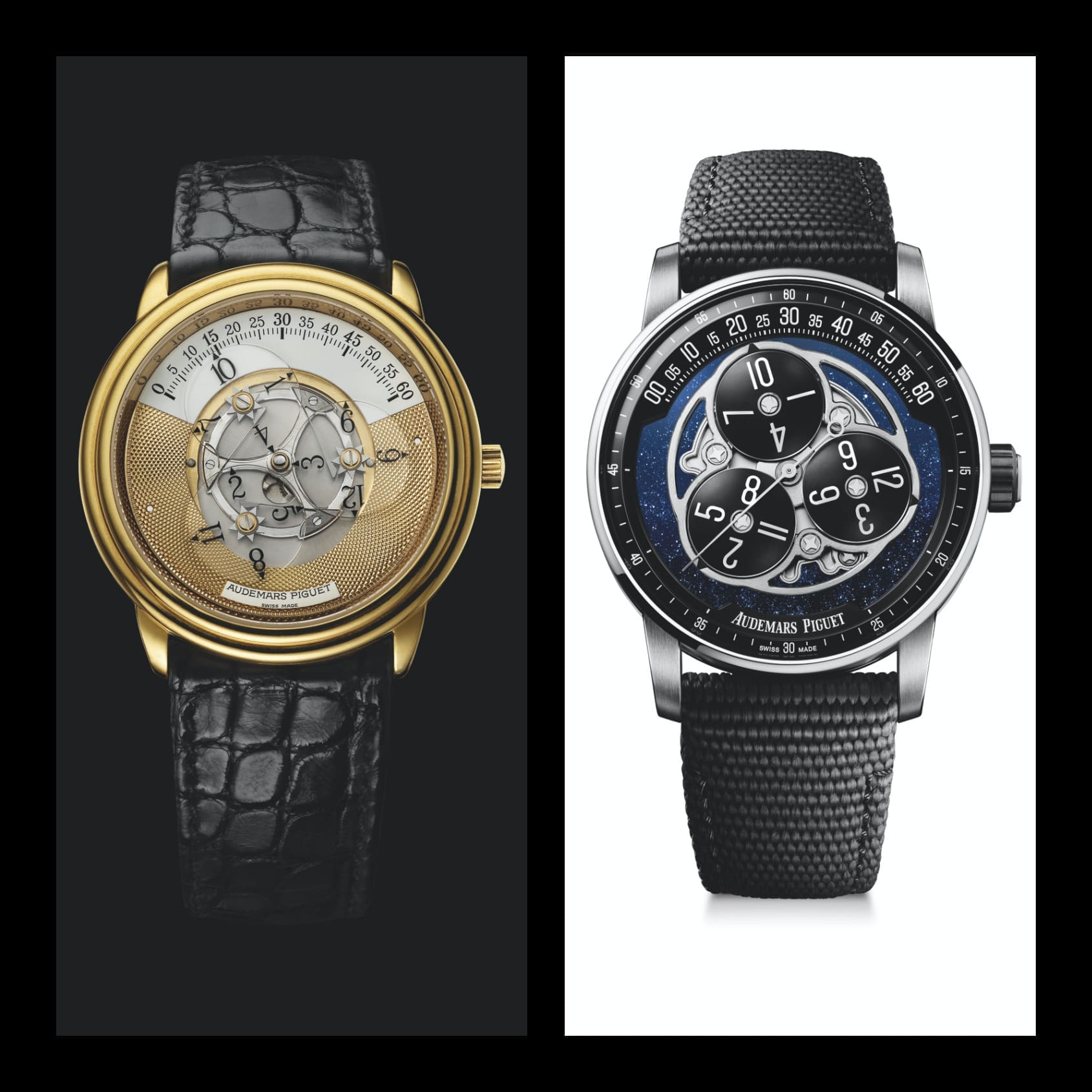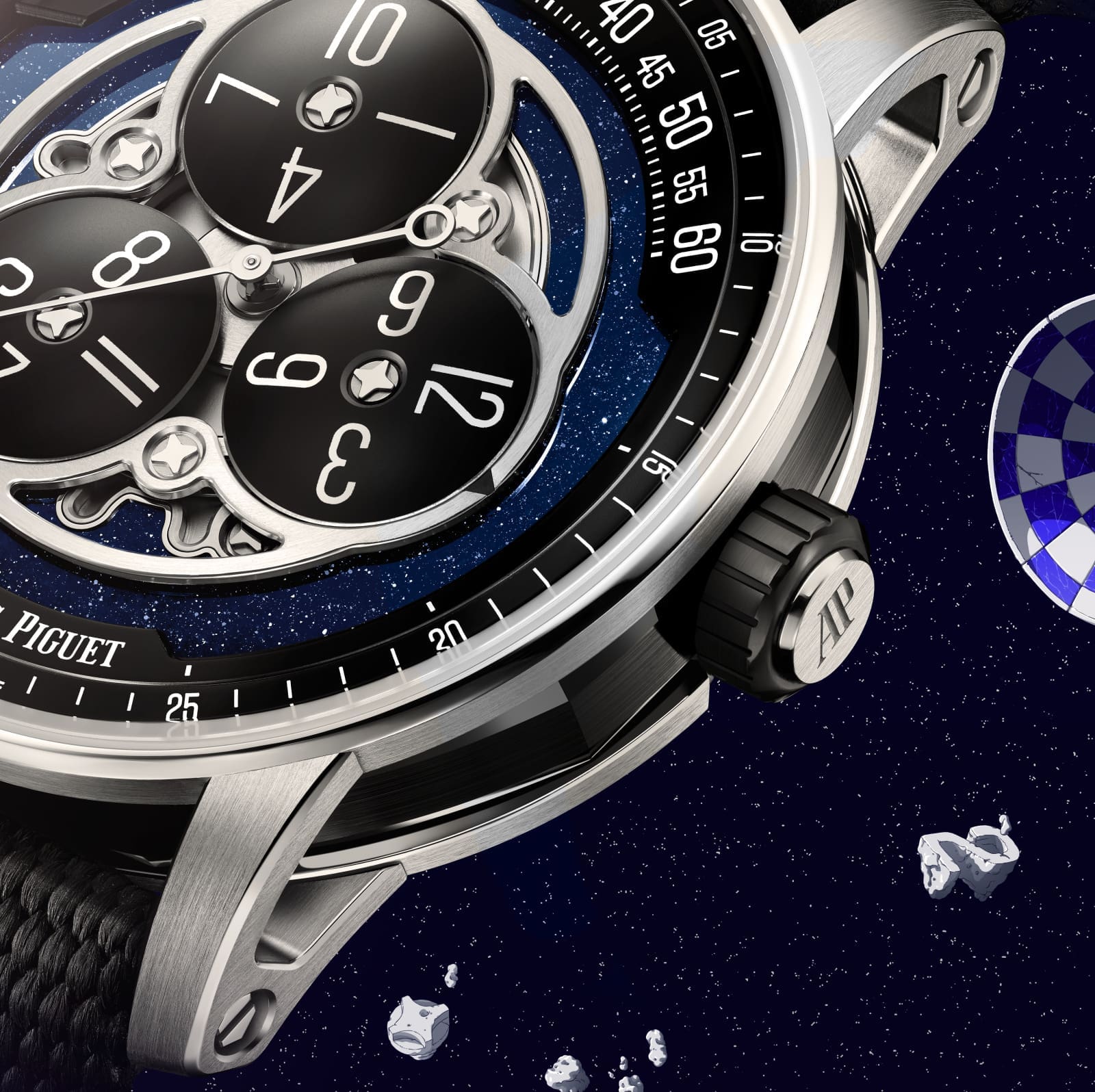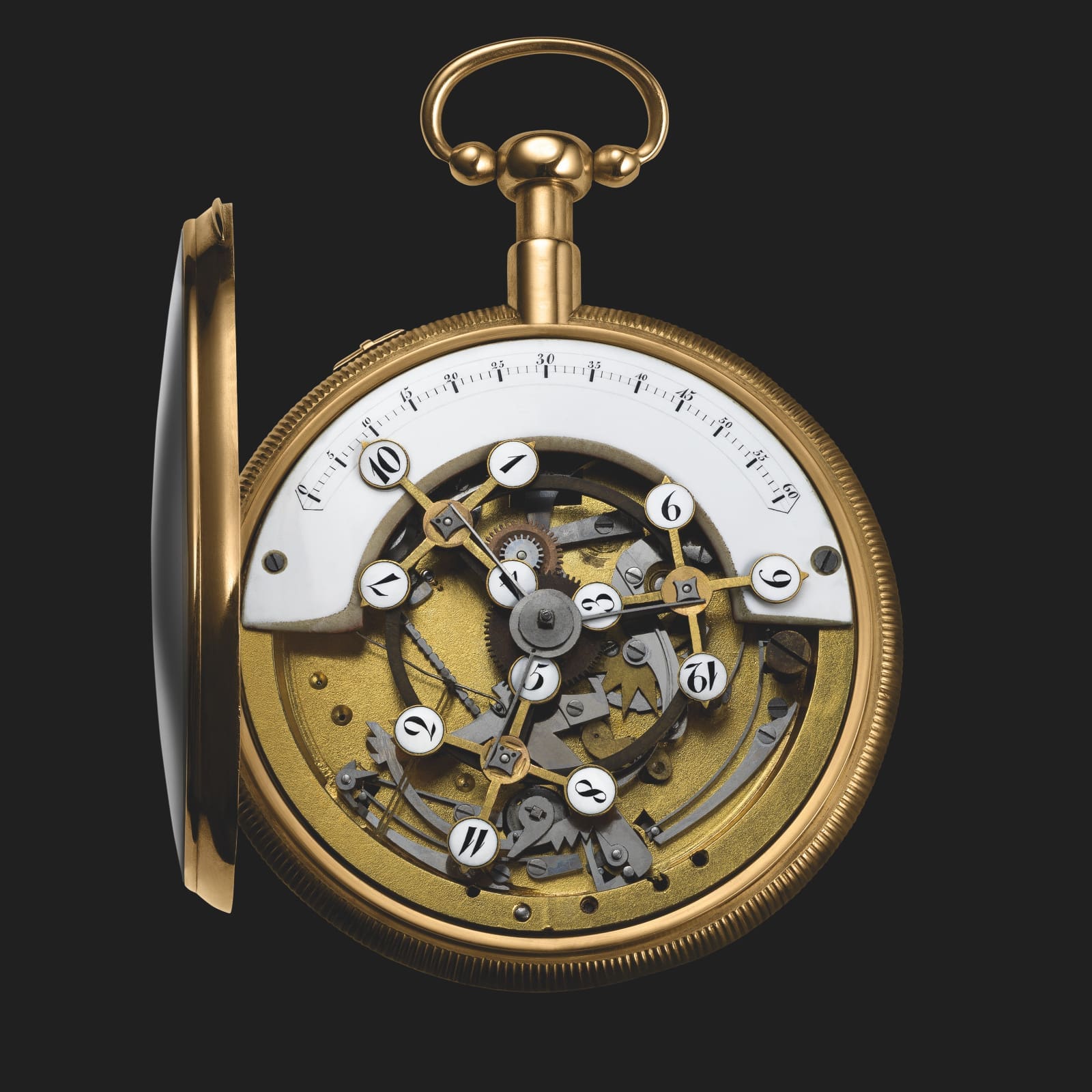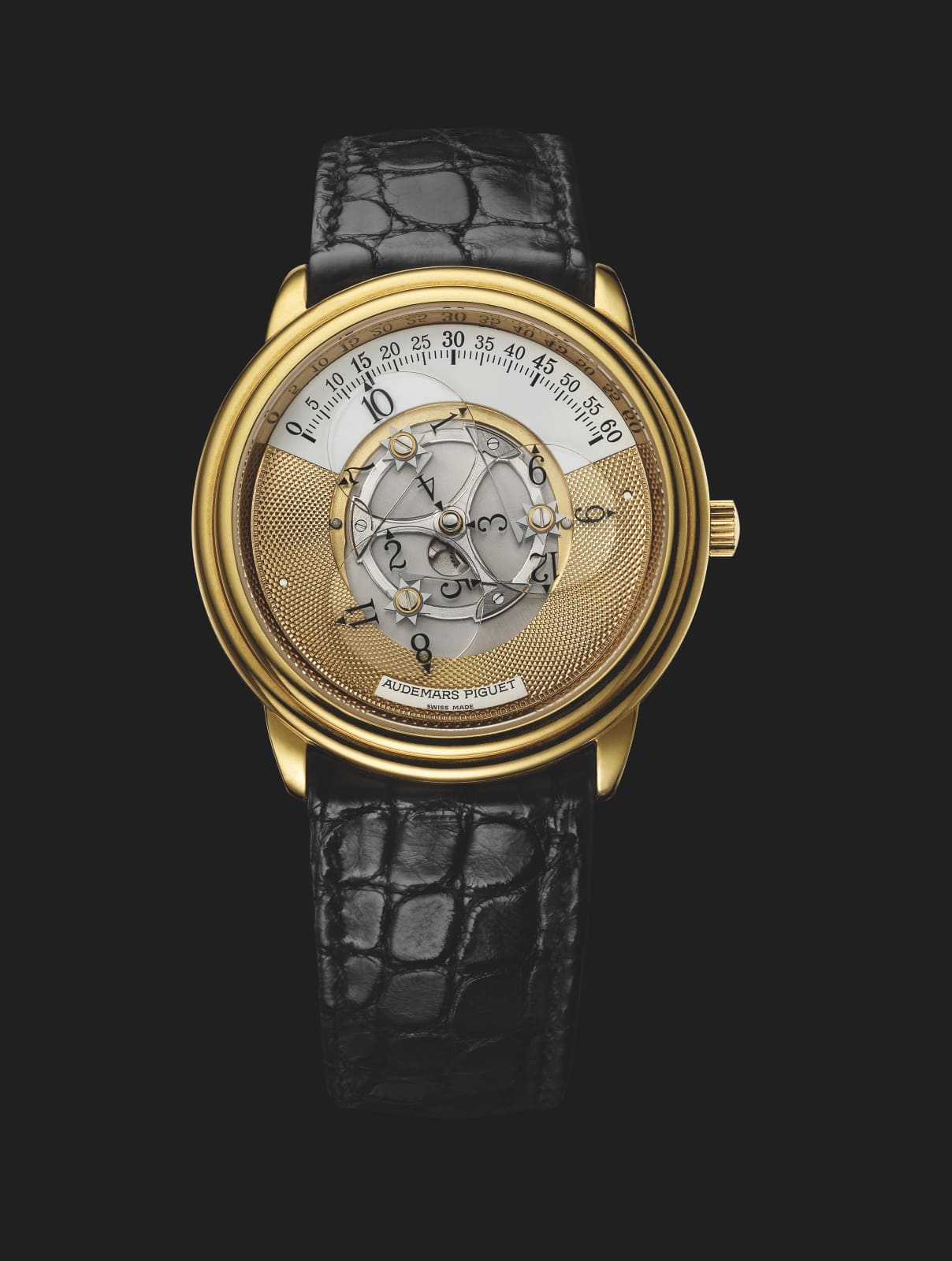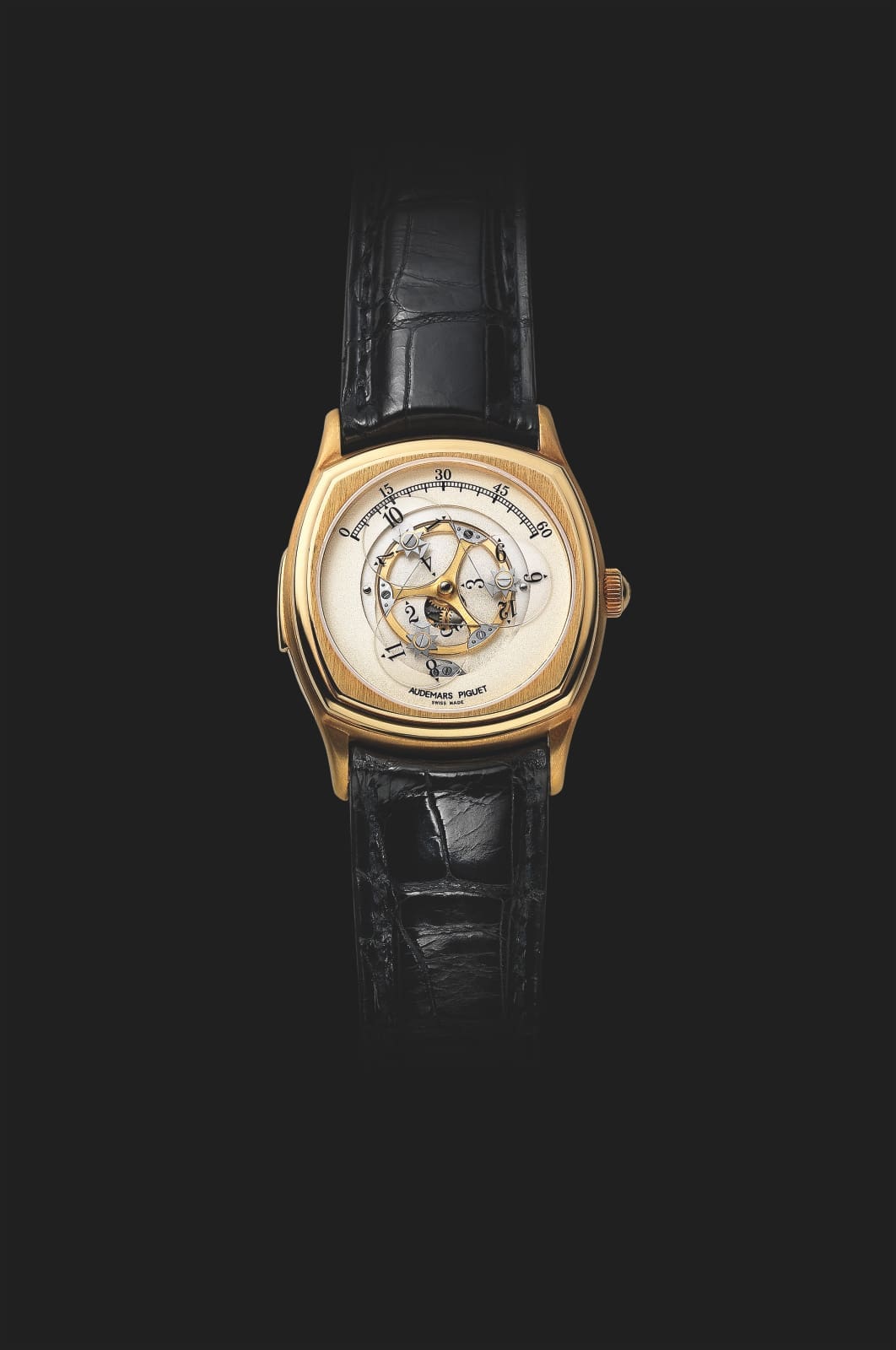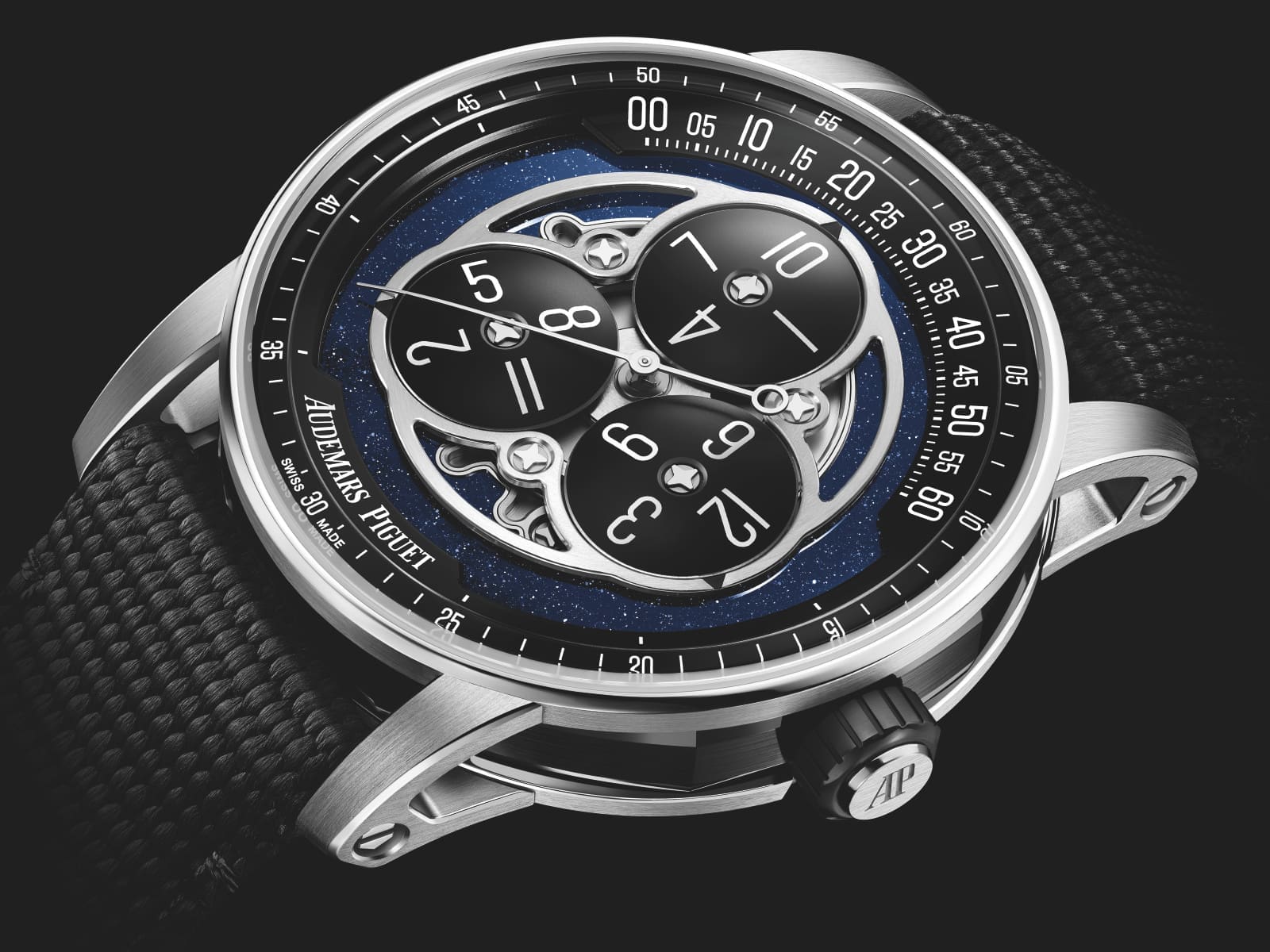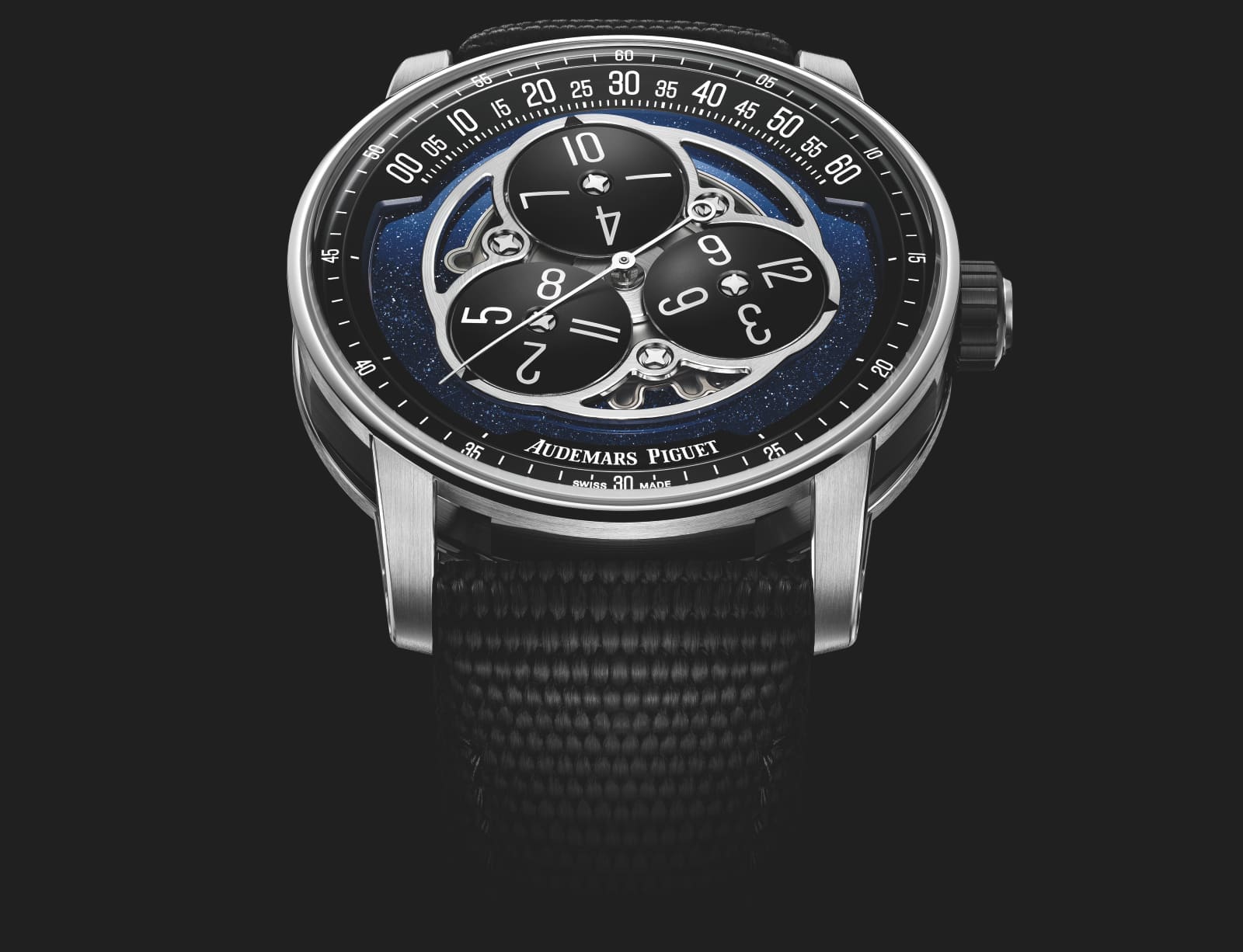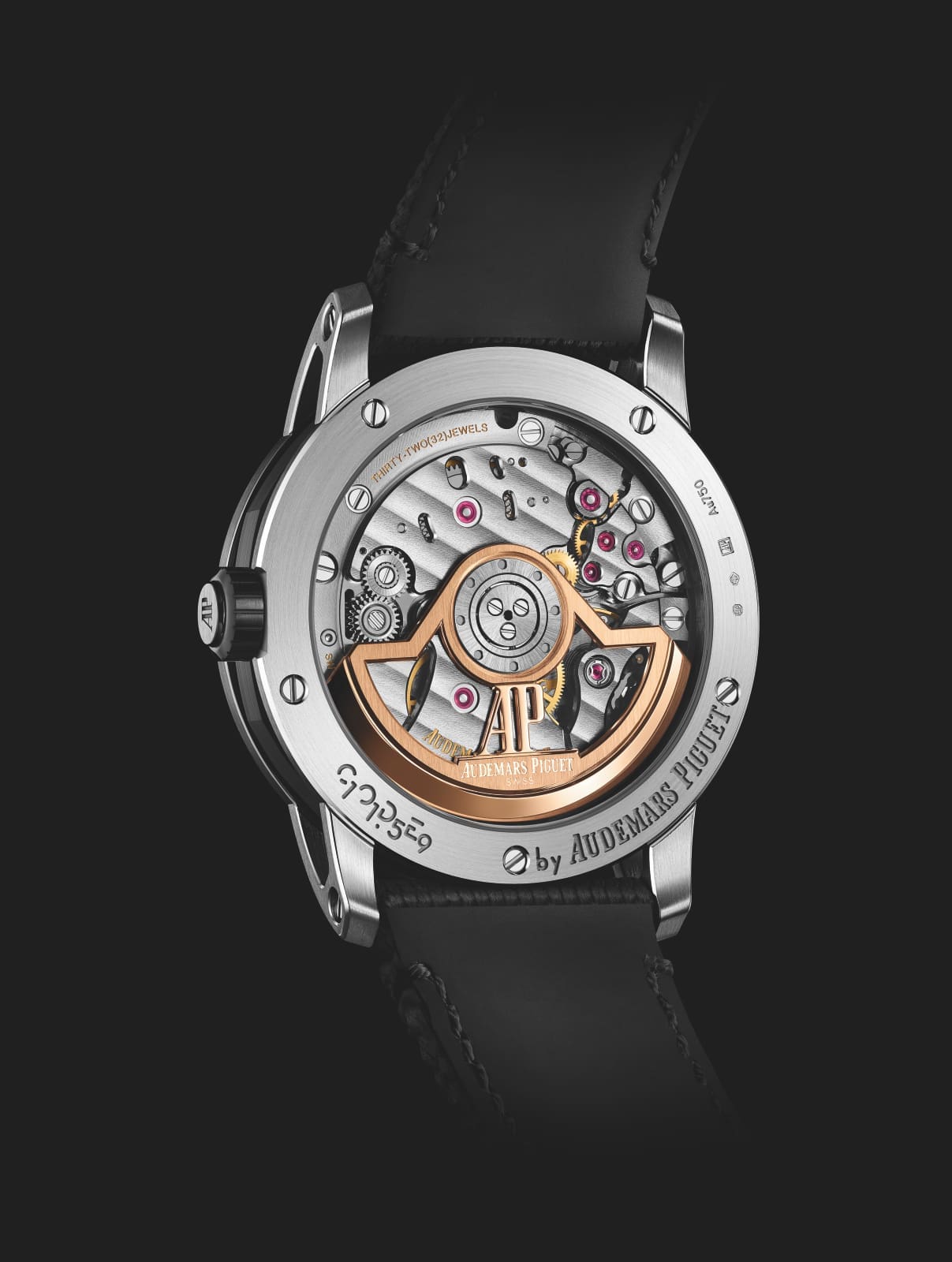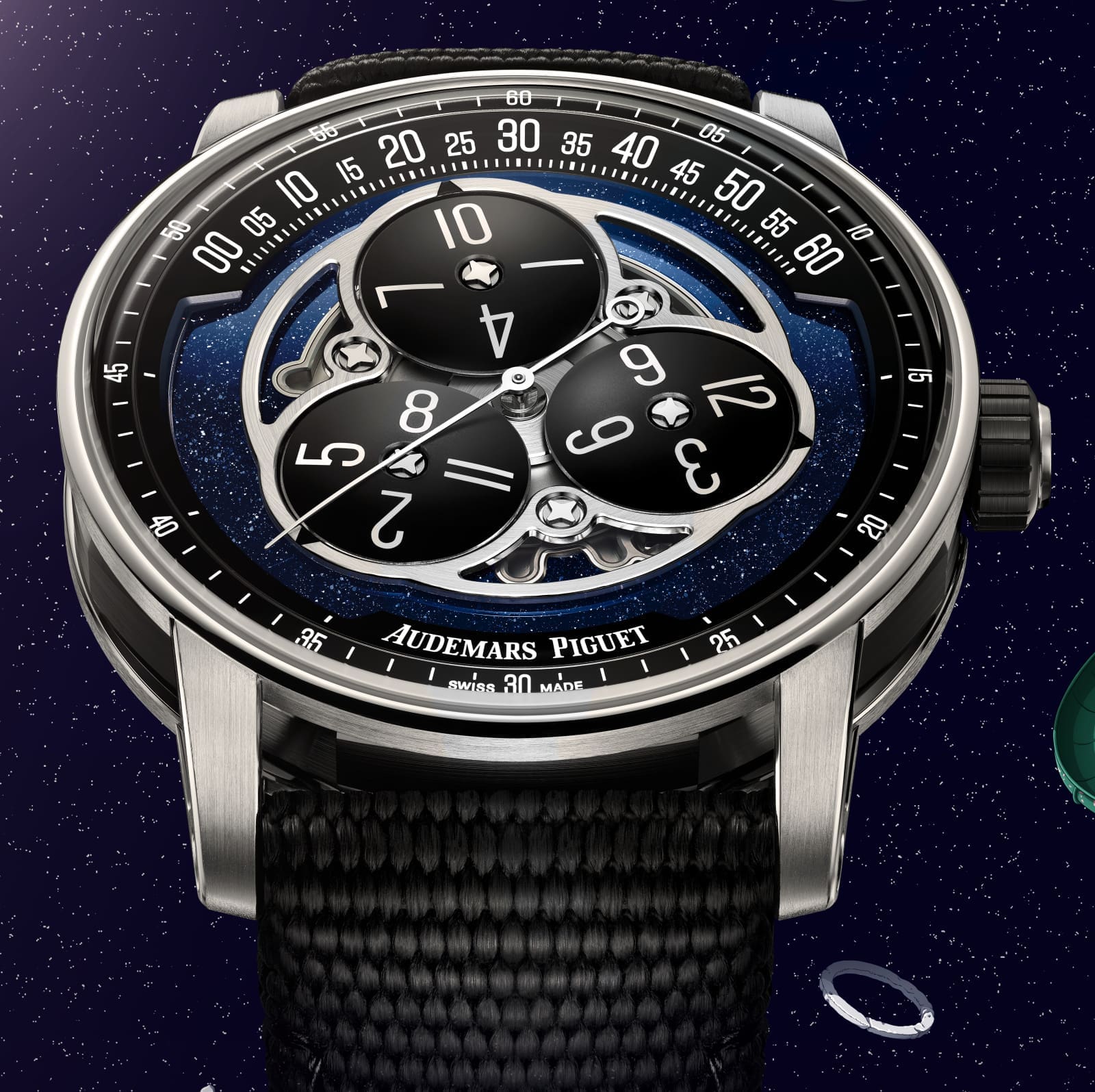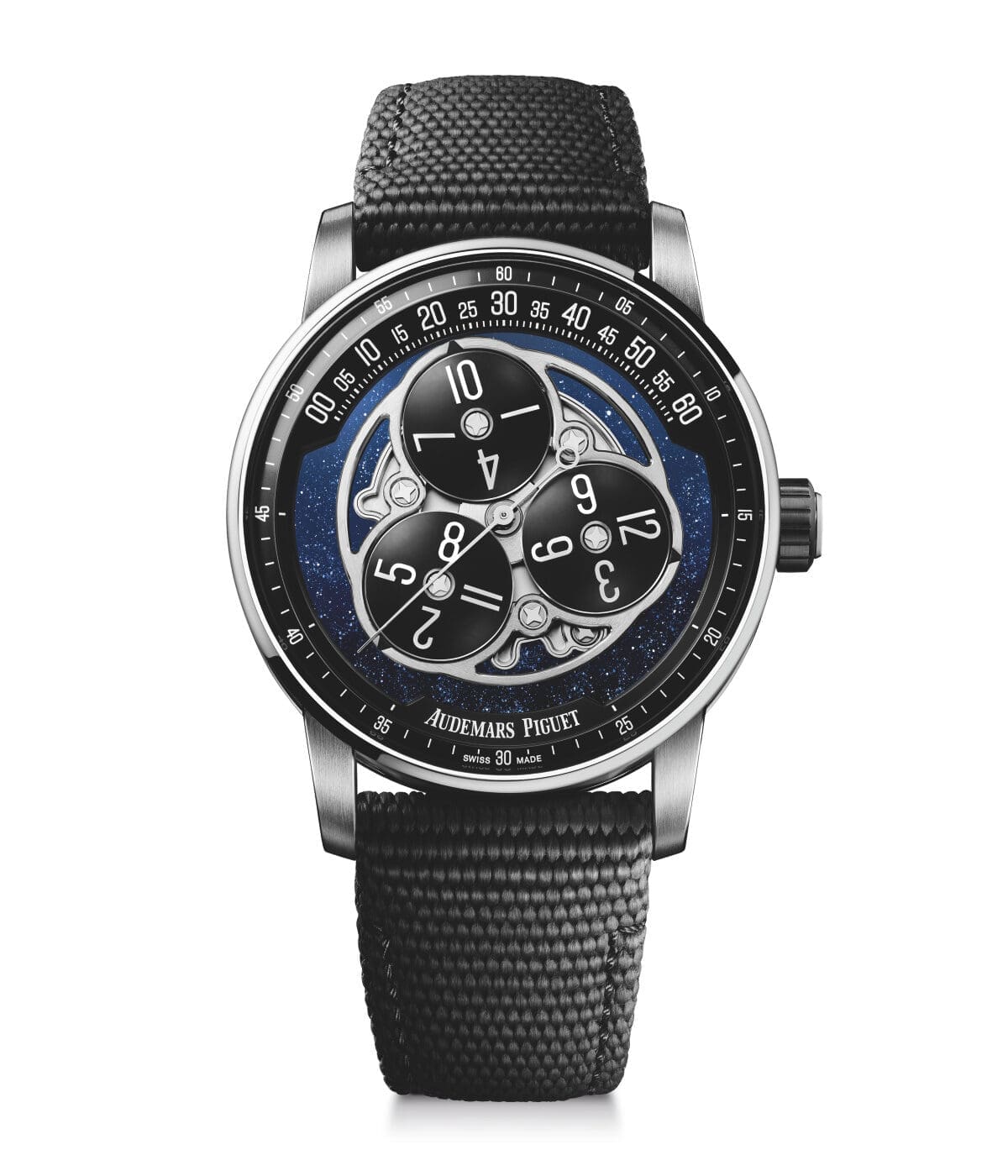The AP Starwheel is not new, but is the new take better than the OG?
Zach BlassWhen modern watch lovers think of the wandering hours complication, most would immediately think of Urwerk that has largely focused on the complication since the brand’s founding in 1997. As a result, we associate the style of wandering hours with a future-forward nature – and I cannot fault this sort of thinking. There is something about its digital display, and satellite orbit like movement around the dial that makes it seems like an aesthetic of tomorrow rather than yesterday. But the truth is the complication actually dates back to the 17th century. Wandering hours displays were utilized in clocks and watches from the beginning of the 17th century all the way up to the 20th century, where the style then fell out of favour. But not all those who wander are lost, and this week Audemars Piguet revived their take on wandering hours, affectionately known as Starwheel, with their new Audemars Piguet Code 11.59 Starwheel.
A brief history of the Audemars Piguet Starwheel
To kick off this origin story, I think its best I defer to a true expert on the matter. Sébastian Vivas, Heritage and Museum Director at Audemars Piguet, explains: “Invented in 1655 thanks to a request by Pope Alexander VII, who suffered from insomnia that was exacerbated by the ticking of his clock, the wandering hours complication was rediscovered by Audemars Piguet in 1991 and combines history, technical challenges, design and poetry.”
While the concept and technology was by no means new, the resurrection of the wandering hours complication, within the context of the marketplace at the time in the ’90s, felt very fresh and contemporary. It presented as seemingly ahead of its time, even though timepieces centuries earlier utilised such a display. Sapphire hours discs orbiting like a satellite around the dial may have presented a modern vibe, but the remainder of the watch had a largely classic feel. A standard 36mm circular case form you could find plenty of already within their collection at the time, clous de Paris like guilloche or other traditional decorations to the bottom two thirds of the dial with the remainder in black and white. So, without the context of its 17th – 20th century predecessors, it almost felt like answering a cell phone in a roaring twenties speakeasy. And therein lies the novelty of its display.
This first generation of Starwheel watches was later discontinued five years later in 1996, but the complication would find itself in the AP Millenary and John Schaeffer collections until 2003 – with a total of thirty models produced from 1991 to 2003. This is why the new Audemars Piguet Code 11.59 Starwheel is such a big deal, resurrecting the complication within AP’s collection after nearly two full decades.
The new Audemars Piguet Code 11.59 Starwheel
Its case is familiar in format, with a 18K white gold outer case paired with a black ceramic mid case. This is a continuation of the precious/ceramic two-tone style AP has largely utilized within the collection over the last two years. While bi-metal two tone can feel dated, bringing your wrist back to the ’90s and Wolf of Wall Street style, precious metal paired with ceramic is the two-tone of the future. And with a primary goal of the Code 11.59 collection being a desire to look towards the future, it really fits the, well, codes of the collection in my opinion.
I could once again wax poetic about the intricate and traditional tree-root hand-finishing to the lugs of the case that is first fabricated using highly modern means – where innovation meets tradition. But, again, what is really new here is the resurrection of a wandering hours display. For those still not clear on how a wandering hours display is read, Audemars Piguet explains: “The time display is achieved thanks to a central rotor operating a complete revolution in three hours and on which are fixed three aluminium discs that turn on their own axes. Each disc has four digits from 1 to 12 that take turns in pointing to the arched sector at the top of the dial on which the minute scale is printed.”
To match the black ceramic Royal Oak inspired mid case, the raised outer seconds ring, topside sloped and semi-circular minutes indication, bottom side Audemars Piguet branding, and the aluminium wandering hours discs are all executed in white on black. But, to, sorry, add a pop of color, and speak to the celestial feel of the satellite-styled display, the main backdrop of the dial is aventurine glass. This creates a befitting starry backdrop. The front side components of the movement hosting the wandering hours discs have a linear graining to their top surfaces, with their edges beautiful chamfered as we have come to expect from AP.
Inside the watch, visible beneath an exhibition caseback, is the AP calibre 4310 which is effectively their time-only calibre 4309 with an added wandering hours module. The automatic 70-hour power reserve calibre has all the hallmarks of an AP movement, with beautifully executed Côtes de Genève, finely chamfered bridges, and a solid gold openworked AP monogram rotor. The watch is affixed to a textured black rubber-coated strap with a 18K white gold pin buckle, further highlighting the feeling of looking forward rather than backwards with a more typical crocodile leather strap.
Better? Who cares, that is subjective. Here is the key takeaway…
Let’s put all the cards on the table. When the Code 11.59 first launched, it was met with resistance by the watch community. With such a hyped up launch, and the mastering the rules before breaking them tagline, honestly I do not know if anything could have lived up to what we all were eagerly anticipating. The initial models, while highly technical and clearly constructed through an incredible mastery of traditional and modern watchmaking techniques, felt like a beta test more than a final form. The thin stick handset, or even the dial as a whole, felt underwhelming to some, and the incorporation of the Royal Oak design cues in the mid case was construed by some as safe rather than rule-breaking and innovative. Then the collection evolved, with dial refinements, more case material play, further complications, and the introduction of an openworked aesthetic that put AP’s industry-leading movement decoration front and center on display. As of late the collection has, at least in my opinion, really grown into its own – the nit pickiest of watch enthusiasts getting it, no longer mocking the model and embracing it as a true force within AP’s repertoire.
In my mind, any Code 11.59 holdouts, after seeing this new evolution of the Audemars Piguet Starwheel, will hopefully now understand the value of the Code 11.59. That, while the collection has made leaping strides in the right direction, we are truly just beginning to see the full potential of the Code 11.59. As a model, born and constructed with the idea of merging the most modern watchmaking techniques with the most traditional, the Code 11.59 is the clear candidate to be AP’s bridge between the past of the brand and the future. There is so much that has yet to be tapped into within Audemars Piguet’s archives and heritage, a whole era of largely bespoke watchmaking that is ripe for reinterpretation in newer horological real estate. And, clearly the Code 11.59 is the perfect home for such experimentation. So, as to which is better – the originals or the new Audemars Piguet Code 11.59 Starwheel – it is entirely apples and oranges. The former conveys why the brand has the storied reputation it has today. The latter proves there is plenty more exciting ground to cover. That while AP largely leverages their traditional know how, they are by no means stuck in the past like some of their contemporaries.
Audemars Piguet Code 11.59 Starwheel pricing and availability:
The new Code 11.59 by Audemars Piguet Starwheel 41mm is available now for inquiries. Price: US$57,900
| Brand | Audemars Piguet |
| Model | Code 11.59 by Audemars Piguet Starwheel 41mm |
| Case Diameter | 41mm (D) x 10.7mm (T) |
| Case Material | Black ceramic case middle and crown, 18-carat white gold bezel, lugs and caseback |
| Water Resistance | 30m |
| Dial | Blue aventurine dial, black opaline aluminium discs |
| Crystal(s) | Double glareproofed sapphire crystal, glareproofed sapphire caseback |
| Strap | Textured black rubber-coated strap with 18-carat white gold pin buckle |
| Movement | Selfwinding calibre 4310 |
| Power Reserve | 70 hours |
| Functions | Wandering hours, minutes, seconds |
| Availability | April 2023 |
| Price | US$57,900 |





